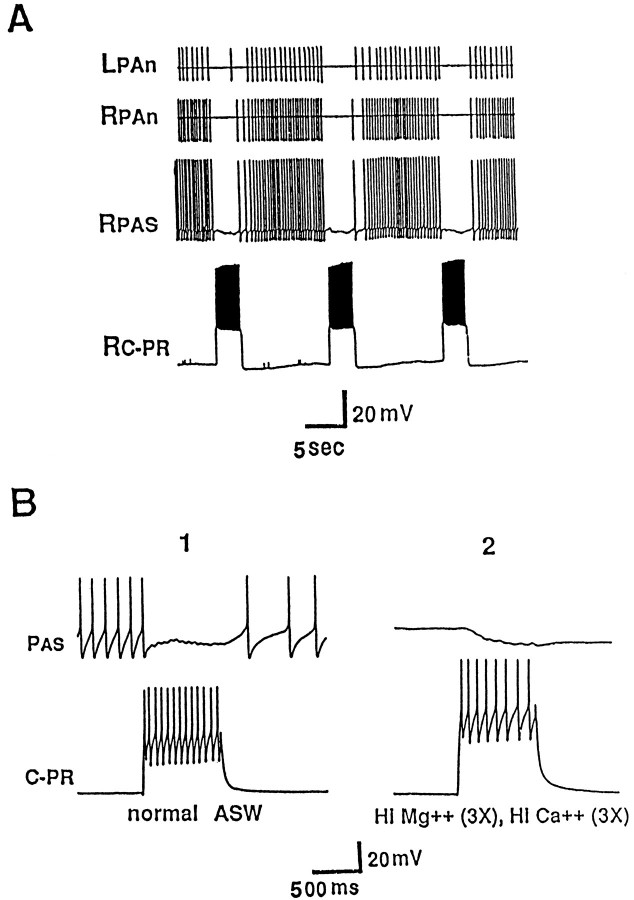Fig. 10.
Effects of the excitatory follower of CC5, C-PR, on PAS. A, C-PR sends an axon from the cerebral ganglion to the ipsilateral and contralateral pedal ganglia via the cerebral-pedal connective, and firing of C-PR could inhibit both the ipsilateral and contralateral PAS neurons. Traces show intracellular recording from the ipsilateral PAS and extracellular recordings from the ipsilateral and contralateral PAS recorded in the left and right pedal artery nerves (LPAn, RPAn).B, The inhibition of PAS produced by firing of C-PR (B1) was not blocked in a high-divalent cation solution (B2), indicating that C-PR may make a monosynaptic connection to PAS (n = 8).

